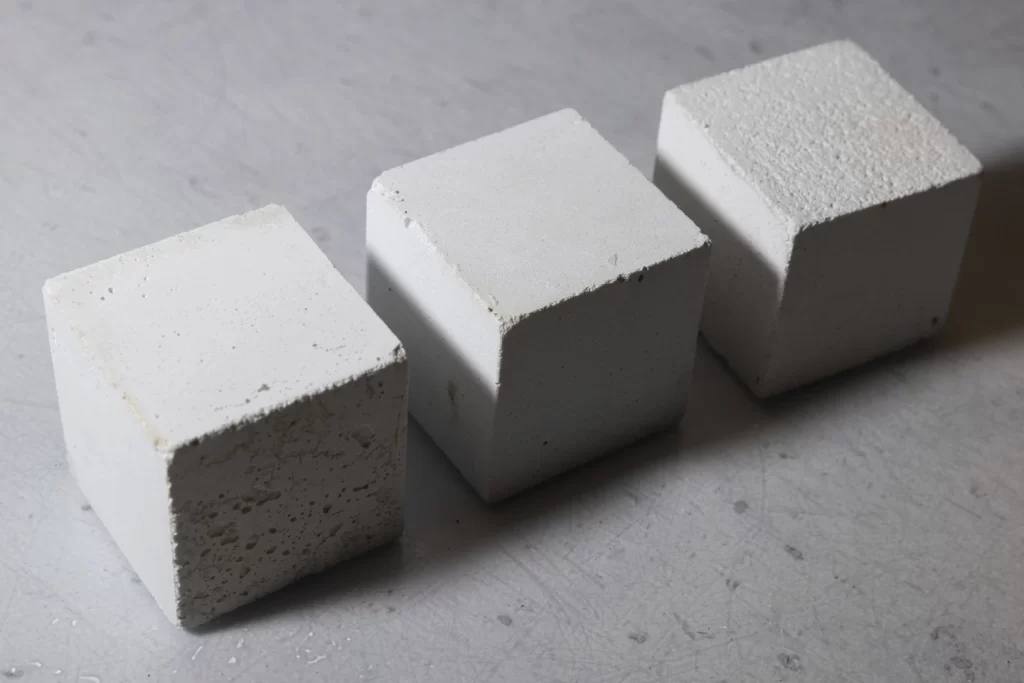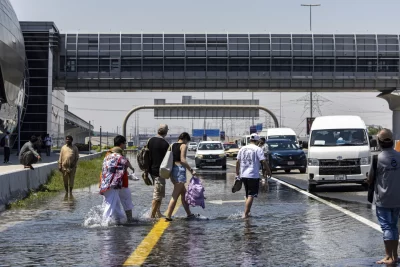
It’s a major contributor to climate change — the way buildings and roads are made with concrete. It’s also a problem that’s growing as more of the world develops. So the race has been on to find solutions for a material that’s responsible for roughly 8% of global carbon dioxide emissions.
Now one California startup has developed a technology that reduces carbon dioxide in the making of cement and could have the potential to operate at large scale. Fortera intercepts carbon dioxide exhaust from the kilns where cement is made and routes it back in to make additional cement. In its first effort at commercial scale, the technology is being added to a CalPortland facility in Redding, California, one of the largest cement plants in the western U.S. It opens Friday.
“Our target is about being a ubiquitous solution that can work really at any plant,” said Ryan Gilliam, Fortera CEO.
Initially Fortera will produce enough to mix with about one-fifth of CalPortland’s product in a blend that reduces carbon by about 10%. Gilliam said there is a strong demand for higher blends that reduce carbon by 40-50%, and for a pure product the company makes, which has 70% lower carbon.
The first large sacks are scheduled to move out the door of the Redding plant the first week of May.
Fortera evolved in part out of an earlier company called Calera that was among the first to convert carbon dioxide into cement starting in 2007. It poured some 100 tons of its low-carbon cement into California office buildings and sidewalks but shuttered in 2014 due to financial challenges. Building on that knowledge, Gilliam founded Fortera in 2019 with several former Calera employees.
There is “pretty much a cement plant every 250 miles in the world,” he said, and most are located near a limestone quarry. Because it works with these existing plants and uses the same material the industry already uses, Fortera says its technology is an economically competitive option to quickly prevent carbon emissions from warming the planet.
One difference from some other low-carbon cement and concrete efforts is it offers at least the possibility of being installed widely at cement plants instead of changing how the industry currently runs.
Fortera’s is one of many efforts to reduce the climate impact of concrete. The American Institute of Architects educates many of the world’s largest architecture firms about carbon emissions from building materials.
Some jurisdictions including Vancouver, British Columbia have building standards that encourage lower-carbon concrete. California passed a law in 2021 that requires the state’s Air Resources Board to develop a strategy for the state’s cement industry to reduce its greenhouse gas emissions by 40% by 2035 and achieve net zero by 2045.
The First Movers Coalition, an organization of more than 90 companies, has an initiative announced in 2021 to create greater demand for low-carbon cement through their immense buying power.
The same year, 40 of the largest cement and concrete manufacturers announced a commitment to making concrete that does not contribute to climate change by 2050 through the Global Cement and Concrete Association. They agreed to reduce emissions from cement, fossil fuel use in manufacturing processes and to develop new ways to capture carbon.







